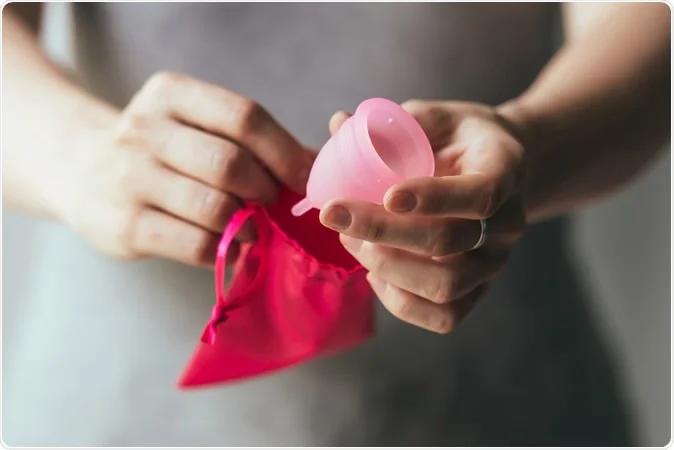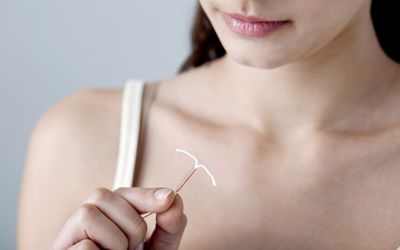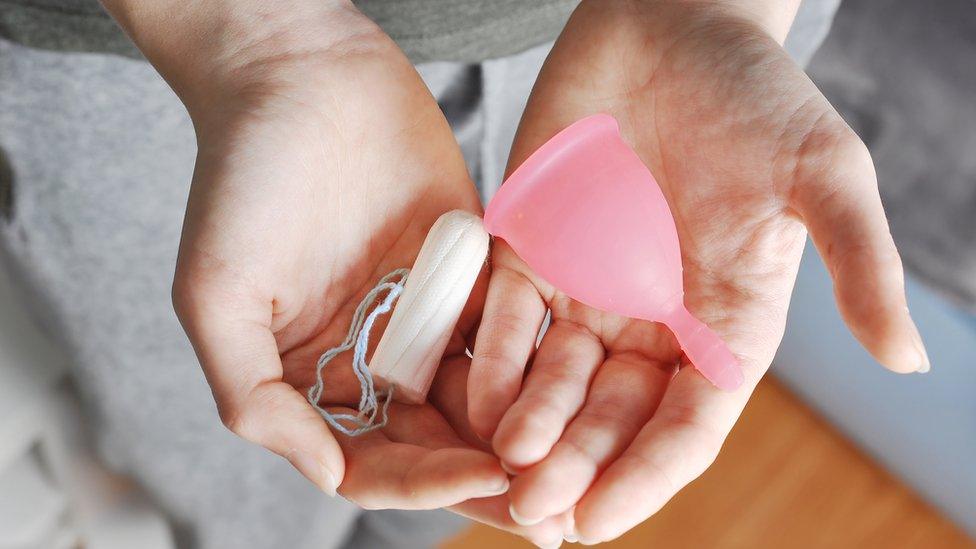Menstrual cups have become a game-changer for many people looking for a sustainable, cost-effective, and low-maintenance way to manage their periods. At the same time, intrauterine devices (IUDs) remain one of the most reliable forms of long-term birth control. But when it comes to using both at the same time, there’s been a lot of confusion and concern — can menstrual cups actually dislodge your IUD? Is it risky? Or is it just a myth that’s been blown out of proportion? If you’ve ever wondered whether it’s safe to use menstrual cups with an IUD, you’re not alone.
Recommended: Should I Inform My Doctor if My IUD Was Dislodged Even if I’m Not Sexually Active?
In this post, we’ll break down where the fear comes from, what the science says, and how to safely manage your period while using an IUD. Whether you’re currently using both or considering switching to one, let’s get into the facts — no panic, just real talk.
What Exactly Are IUDs and Menstrual Cups?
To understand the concerns around using both together, let’s first look at what each one does.
IUDs (Intrauterine Devices)

An IUD is a small, T-shaped device that a doctor places inside your uterus to prevent pregnancy. It’s one of the most effective forms of birth control and can last anywhere from 3 to 10 years, depending on the type.
There are two main types:
- Hormonal IUDs (like Mirena or Skyla), which release a hormone called progestin to help stop ovulation and thicken cervical mucus.
- Copper IUDs (like Paragard), which are hormone-free and use copper to block sperm from fertilizing an egg.
Menstrual Cups
A menstrual cup is a soft, flexible cup usually made of medical-grade silicone. You insert it into your vagina during your period, and it collects your menstrual flow instead of absorbing it like a pad or tampon. Once it’s full, you take it out, empty and rinse it, then put it back in. You can wear it for up to 12 hours, and since it’s reusable, it’s a great eco-friendly option.
Recommended: Is the Copper IUD Better for Heavy Periods?
Both IUDs and menstrual cups offer a lot of freedom and convenience. But since they’re both used internally, many people wonder if using them together is actually safe — or if it could cause complications.
Common Fears About Menstrual Cups Dislodging IUDs
If you’re someone who loves the idea of using both a menstrual cup and an IUD, it’s totally normal to feel a bit nervous about whether the two are a safe combo. After all, they both sit inside your body and work closely with your cervix — so it’s not hard to imagine how one might interfere with the other. Here’s a breakdown of the most common fears people have, along with the reasoning behind them:
1. Suction Might Pull the IUD Out
Menstrual cups work by forming a tight seal with the vaginal walls to prevent leaks. To remove the cup, you’re supposed to pinch the base to break the seal before gently pulling it out. However, if you forget to break the seal and just yank it out by the stem, the suction can create a strong pulling force inside the vagina.
The fear is that this suction might also tug on the IUD strings — which hang down slightly from the cervix into the vaginal canal — and potentially dislodge or expel the IUD. While it’s not extremely common, it can happen if the cup is removed too forcefully or incorrectly, especially if the IUD is newly placed.
2. The Cup Could Grab or Tangle the IUD Strings
IUDs come with thin, nylon strings that extend a bit into the vagina so you (or your doctor) can check if the IUD is still in place or easily remove it when needed. These strings are typically trimmed short, but if they’re left longer, they can sometimes sit close to where the menstrual cup rests.
Some people fear that when removing the cup — especially if it has small holes or firm edges — the strings could accidentally get caught in or pinched by the rim. This might lead to unintentional tugging on the strings and shift the IUD out of place.
Recommended: How to Switch from the Pill to an IUD
3. Not Knowing the IUD Has Shifted or Been Expelled
One of the more subtle fears is that an IUD could partially or fully come out without any noticeable signs. This is called a “partial expulsion,” and it could mean the IUD is no longer sitting correctly in the uterus, reducing its effectiveness.
Since not everyone checks their IUD strings regularly (or even knows how), some worry that their menstrual cup could slowly cause their IUD to move over time — and they wouldn’t realize it until they experience symptoms like heavier bleeding, cramping, or an unplanned pregnancy.
4. Increased Risk Right After Insertion
Right after getting an IUD inserted, your uterus and cervix may still be adjusting to the new device. This period (usually the first 4–6 weeks) is when the risk of IUD expulsion is highest — whether you’re using a menstrual cup or not.
Using menstrual cups during this time might increase the risk if you’re not extra cautious, since any pressure or suction in the vaginal canal could impact how well the IUD stays in place. That’s why many healthcare providers recommend waiting at least one full menstrual cycle after insertion before using a cup.
How to Use a Menstrual Cup Safely with an IUD
If you love the idea of using menstrual cups but still want the reliable protection of an IUD, good news — you can absolutely use both safely, as long as you take the right precautions. Below are some helpful tips to reduce the risk of dislodging your IUD while still enjoying the comfort, convenience, and eco-friendliness of a cup.
1. Wait a Few Weeks After IUD Insertion
Right after your IUD is inserted, your body needs time to adjust, and the device needs time to settle securely in place. Most healthcare providers recommend waiting at least one full menstrual cycle (about 4–6 weeks) before using menstrual cups.
This gives your uterus time to contract back to normal, reducing the chances of accidental expulsion.
Recommended: Pros and Cons of Long-Acting Reversible Contraceptives (LARCs)
2. Check with Your Healthcare Provider First
Before using a cup with your IUD, it’s a good idea to ask your doctor:
- Is my IUD in a stable position?
- Are the strings trimmed short enough?
- Is there any reason I should avoid a cup?
They can help determine if it’s safe based on your anatomy and how your IUD was placed.
3. Know Where Your Strings Are

IUD strings usually extend a little past the cervix into the vagina. You can gently check their position by inserting clean fingers to feel if they’re low, long, or possibly hanging near where the cup would sit.
If the strings feel too long, your doctor may trim them slightly. Never trim them yourself — it must be done by a professional to avoid damaging the IUD.
4. Learn Proper Insertion Technique
When inserting your menstrual cup:
- Fold the cup as usual and insert it at a slight angle toward your tailbone.
- Make sure it opens fully below your cervix — not directly up against it.
- Give the cup a slight turn or wiggle to help it form a seal.
5. Break the Seal Before Removing the Cup
This is critical. Never pull your cup out by the stem without breaking the suction seal first.
Instead:
- Reach in with clean fingers.
- Pinch the base of the cup to release the seal.
- Gently wiggle it side to side as you remove it.
This prevents unnecessary pressure or pulling that could affect the IUD strings.
6. Monitor for Any Signs of Movement
Every so often, especially after your period or if something feels “off,” check for:
- Shorter or longer IUD strings
- Unusual cramping
- Heavier bleeding
- A missing string or feeling the plastic end of the IUD
If anything seems wrong, see your doctor right away to check if the IUD has shifted.
Recommended: Does Birth Control Pills Cause Weight Gain?
7. Use a Soft, Flexible Menstrual Cup
Some menstrual cups are firmer than others. If you’re concerned, go for a softer cup that still seals well but creates less suction. Brands like Saalt Soft, Lena Sensitive, or OrganiCup (now AllMatters) are designed with gentler users in mind.
Alternatives to Menstrual Cups If You’re Worried
If using a menstrual cup with your IUD makes you nervous — even after doing your research — that’s totally okay. Your comfort and confidence matter most when managing your period. The good news? There are plenty of safe, effective, and IUD-friendly alternatives to menstrual cups that you can explore.
1. Organic Cotton Pads
If you prefer external protection, organic cotton pads are a gentle, breathable choice. They’re free from harsh chemicals, dyes, and fragrances — making them ideal for people with sensitive skin or concerns about irritation.
Pros: Easy to use, no internal insertion, no risk to your IUD
Cons: Less eco-friendly if disposable, needs frequent changes
2. Period Underwear

These ultra-absorbent underwear are designed to soak up menstrual flow — some can hold up to 3–4 tampons’ worth of blood. They’re reusable, comfy, and ideal for both light and heavy days.
Pros: No insertion, reusable, leak-proof
Cons: Can be expensive upfront, not ideal for super-heavy flow on its own
3. Organic Tampons (Without Applicators)
If you still prefer internal protection but want something lower-risk, tampons might feel more familiar. Choosing 100% organic cotton versions helps avoid unnecessary chemicals. Just make sure to insert them carefully and check your IUD strings from time to time.
Pros: Convenient, discreet
Cons: Needs frequent changes, can be drying, generates more waste
4. Soft Tampons or Sponges
Unlike regular tampons, soft tampons are cushiony and often stringless. Some are designed for comfortable wear during sex and can be molded to your shape. They’re less likely to interfere with your IUD, but care is still needed.
Pros: Gentle fit, discreet
Cons: Can be tricky to remove, not reusable, may still touch IUD strings
Recommended: Does Birth Control Pills Make You Sleepy?
5. Reusable Cloth Pads
If you want to stay eco-friendly without using anything internal, reusable cloth pads are a great alternative. They come in different sizes, patterns, and absorbencies — and you just wash and reuse them.
Pros: Environmentally friendly, cost-effective over time
Cons: Requires regular washing, bulkier than disposables
Conclusion
While it’s true that using a menstrual cup with an IUD comes with some risks — like possible expulsion or string interference — the good news is that these risks are low and often preventable. With proper technique, regular check-ins with your healthcare provider, and attention to your body, many people successfully and safely use both without any issues.
If you’re ever unsure, it’s okay to take a step back and explore other period care options. There’s no one-size-fits-all solution when it comes to your reproductive health — just what feels right for you. Whether you choose a cup, tampons, pads, or period underwear, the most important thing is feeling safe, confident, and in control of your body.
